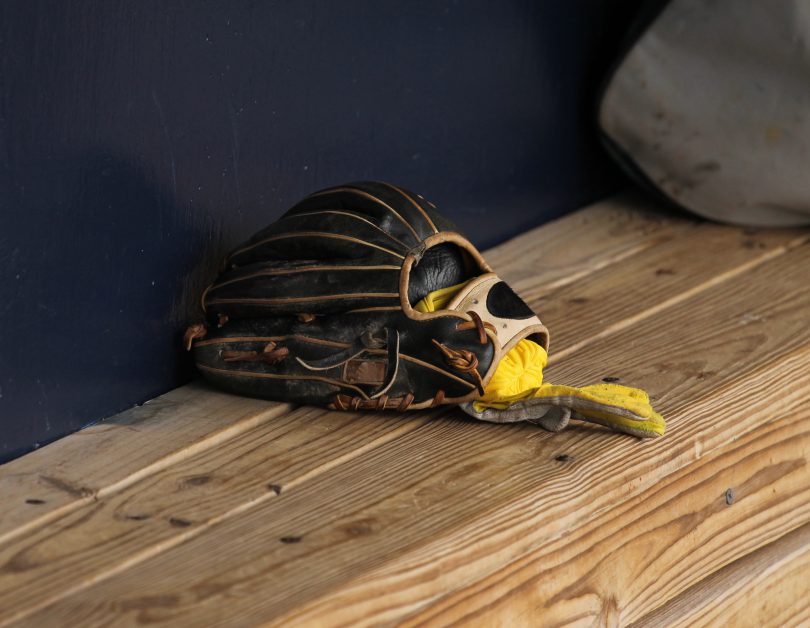Want to hear the audio version of this blog post? Just click play below!
Forget the hype about exposure. Development (getting better!), not exposure, is what will get you to college baseball.
Consider the following scenario: You are the best high school baseball player in the country and have excellent grades and test scores. Do you think it will be difficult to get recruited? No! It will be easy and inexpensive because you have everything that college coaches look for in a recruit. Every college coach will want you on their team and they will pursue you. Your recruiting process will consist of connecting with coaches at the schools that fit your criteria and figuring out which is going to give you the best chance at your desired college baseball experience.
Even though it’s pretend, there’s a really valuable lesson to learn from this over-simplified scenario. Better skills mean more interest. More interest means better options. Development (getting better), not exposure, is the key to being recruited, because developing college-level skills are necessary to create meaningful exposure and generate serious interest from college coaches in the first place.
Let’s explore this idea in more detail and look at why so many college baseball hopefuls are falsely led to believe exposure is the key to being recruited to play baseball in college.
The “All Exposure Is Good Exposure” Myth
Some for-profit youth baseball companies whose showcases and tournaments have become popular recruiting events want everyone to believe the myth that more exposure automatically means more opportunities to be recruited. The term “exposure” is used as a marketing catch-phrase falsely synonymous with being recruited. When recruits and parents are led to believe that exposure alone will lead to recruitment, they will continue to spend increasing amounts of money to attend “exposure” events. This false equation of exposure and recruitment spells big profits for companies looking to make money, and costly mistakes for well-intended recruits and families, who just want the best shot at fulfilling college baseball dreams.
The problem with the “exposure equals recruitment” logic is that exposure alone is not necessarily a good thing. The use of exposure in a non-baseball scenario will paint a useful picture. Imagine a family outing to the snow where everyone is dressed appropriately, is prepared for exposure to colder weather, and there’s a warm cabin to shelter in when the blizzard comes. Sounds like fun, right? Now compare that to an unprepared family caught in the same blizzard while driving through the mountains. They are exposed to the same harsh elements, but their experience is much different. Quite the contrast, isn’t it?
Like the snow scenario, a developed prospect with skills and the physical maturity that college coaches are looking for and a prospect who doesn’t have college-ready skills and physicality will have much different experiences when being evaluated and scrutinized by the same college coaches at an exposure event. Seeking the same type of exposure will produce two very different results for each player. It’s clear to see which type of prospect you want to be and why developing these college-ready tools and skills is a precursor to meaningful exposure to college coaches. Prospects who are unprepared or do not possess the skills, tools, or physical traits that college coaches want are likely to get ignored or crossed off recruiting lists, possibly for good.
The lessons here are twofold:
1) You don’t need to break the bank chasing exposure to get recruited to play college baseball. KPB’s resources have helped players with tight budgets successfully navigate the recruiting process, so you won’t have to do it alone. In the age of the internet, exposure can be created instantly online. We talk about free alternatives to things like expensive showcases here and how to use technology to save money and get recruited here. Want to use video and social media to create meaningful exposure? This article is your go to resource on how to do it for free.
2) If you have financial resources to invest, you should invest in your development (getting better!), because having developed skills leads to easier, cheaper, and more effective exposure and interest from college coaches. Put your time and effort into getting better and it will not only give you the best chance at making it to the next level, but also save you from wasting money on premature or unnecessary exposure.
Creating Your Development Plan
With the amount of quality baseball resources available for free, your development as a player depends more on your motivation and willingness to put together a good plan than how much money you have in your wallet. Your development plan should target improvement in many areas, including baseball/position specific skills, strength and conditioning, academics, and the mental game. We suggest starting right here on the KPB website.
Explore our articles on the different levels of college baseball and what it takes to make a college roster at your position. Familiarize yourself with the standards that you need to meet for the level you desire to play. What are the tools, expectations, physical size, baseball awareness that you need to display for coaches? Figure it out and create a plan that will help you cultivate those skills. Check out lessons about what college coaches are looking for and suggestions from guys who have successfully made it through the recruiting process before. Learn from those who have been where you want to go. See if you can think the game on a college level with our mental game preparation. Make it a goal to visit the KPB site and stay up to date with new content, which is released at times when it is most relevant to the recruiting process. All the information is free and geared towards helping you get recruited.
Next, expand your search for information. Ryan Faer, who works in development and rehabilitation with the Cleveland Indians organization, provides great free information on his blog. Eric Cressey is another leader in player strength and conditioning and wellness. His blog is another great resource. The same is true of Driveline Baseball, who provide tons of free training advice through their strength and conditioning blog, website, and social media. Zach Dechant TCU Baseball’s strength and conditioning coach does a great job of sharing baseball specific S&C information. Joey Bergles does a great job of illustrating how to incorporate S&C into the high school setting.
Finally, engage with people on social media. Follow #FridayFielders or #STdrills on Twitter for defensive drill suggestions. Go back and look through #ABCAchat from the past, where college coaches talk about development and provide a wealth of free information you can implement to get better. Lastly, take advantage of free exposure opportunities like Flatground App and its network of facilities and coaches who will help you create a video with the data and information that college coaches need. If there is an event or camp you think can help you, ask if they offer scholarships to cover registration fees or if you can do work for them to help reduces costs. It never hurts to ask.
As you can see, your development as a player doesn’t have to be expensive. You may have to find ways to creatively implement ideas, but the information is out there and that is part of the fun. If you need more suggestions, send us an email or message us on Twitter. We are always there to help!







